The days of mastering one are gone. Everyone wants to be a swiss army knife now and not be confined into a stereotype. Isuzu is a great example of this. For so long, they’ve been known for their durability and reliable engine but if you wanted something more refined, one with a bit more flair, you’d have to look elsewhere.
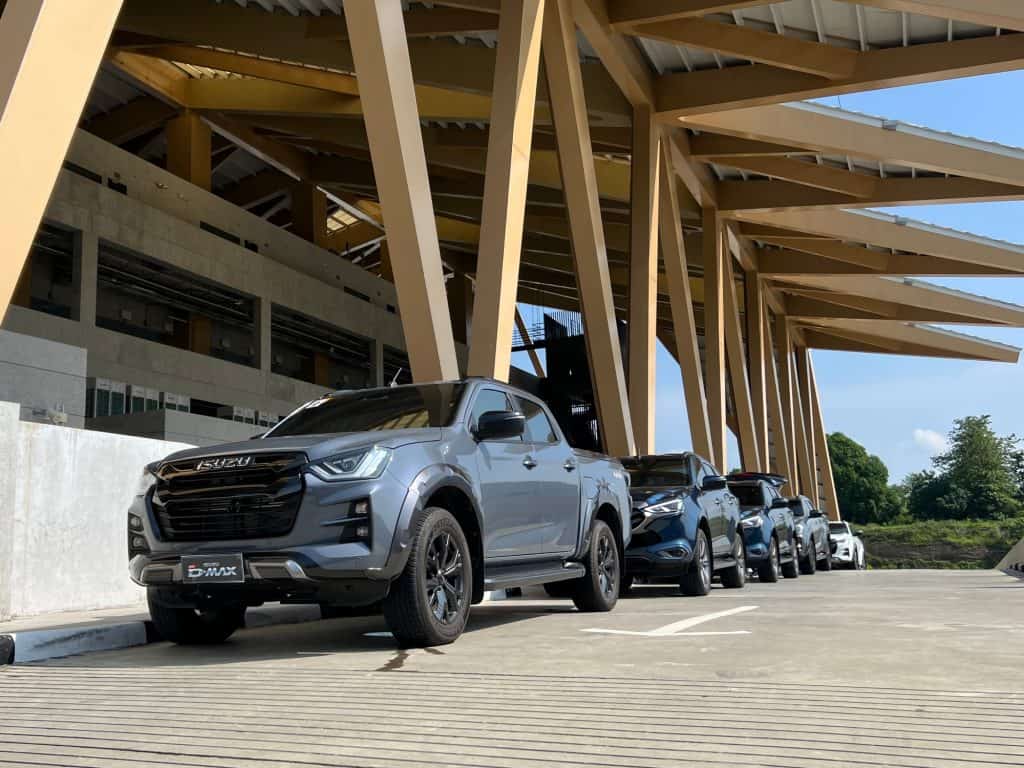
That ended back in 2021 when they launched the newest generation of the D-Max and mu-X. They’re still macho from all angles but beneath the metal are a slew of advanced driver assist features that’s unexpected from a brand only known for being rugged ready. I’ve driven both cars before but I can only try a few of the new toys since they’re there for emergency purposes and not something to play with – until one fateful day in June.
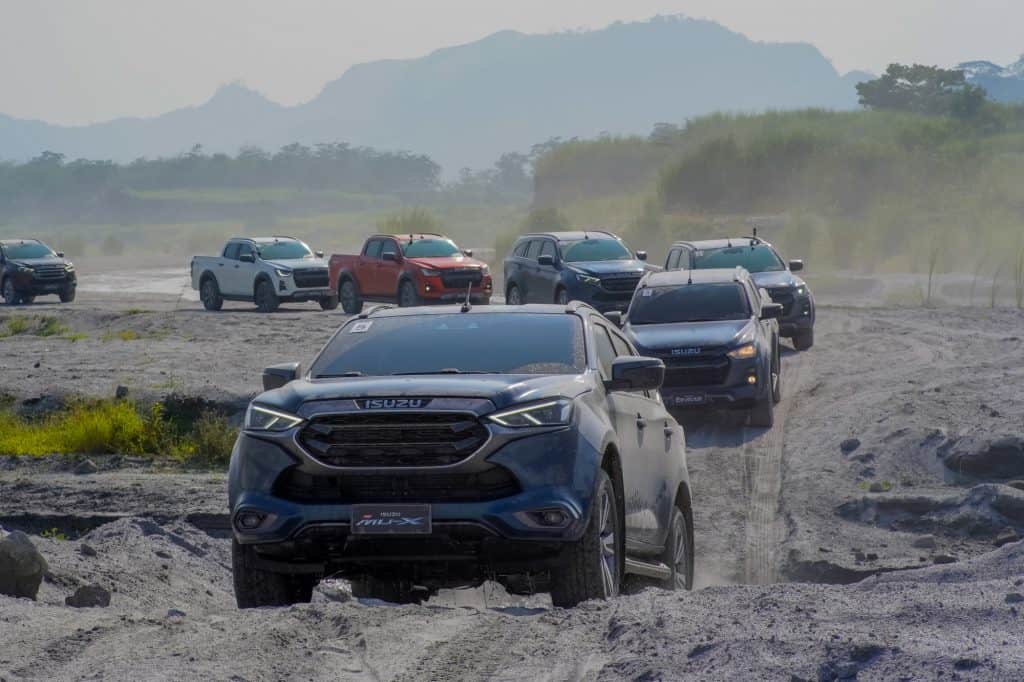
Isuzu invited me to a drive, way out in New Clark City in Tarlac to have a day with their twins. They made a series of activities to try out the advanced features we cannot do on our own in public roads, and then they took us for more fun on the dirt.
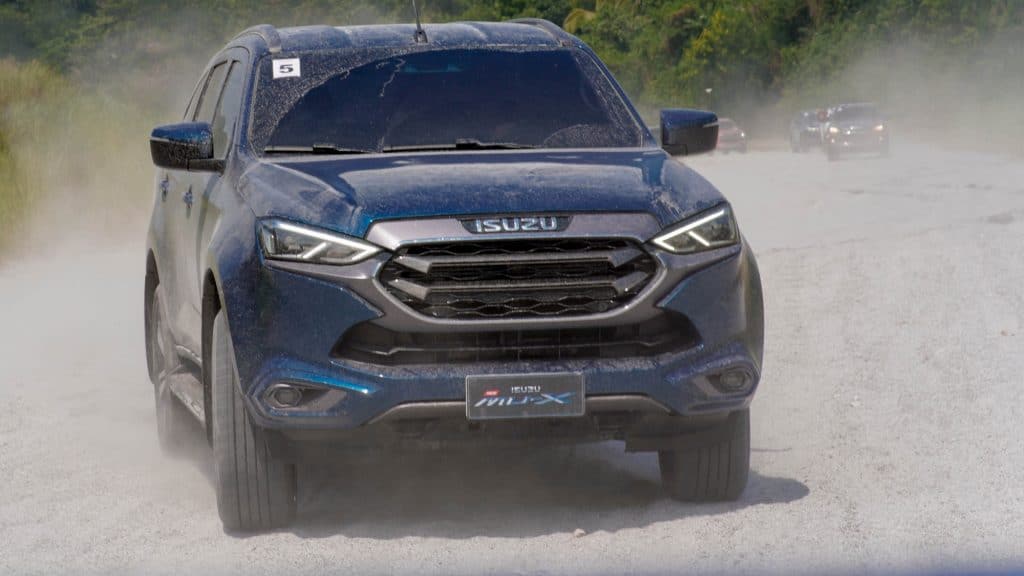
Surprisingly Refined Tech
The first activity for the twins was trying out their emergency systems in controlled conditions. First up was the Pedal Mis-Application Mitigation that cuts off throttle input to avoid accidents. They had us park facing a wall that’s only a meter or so away from the car. I shifted to Drive, released the parking brake, and floored the throttle, only to have the car crawl. It’s like I shifted to Neutral and not Drive. This is useful for those who are not used to the power of a diesel engine and tends to press the throttle quite deep, or if you (as the name suggests) stepped on the throttle by accident, the car itself knows to cut off the connection.
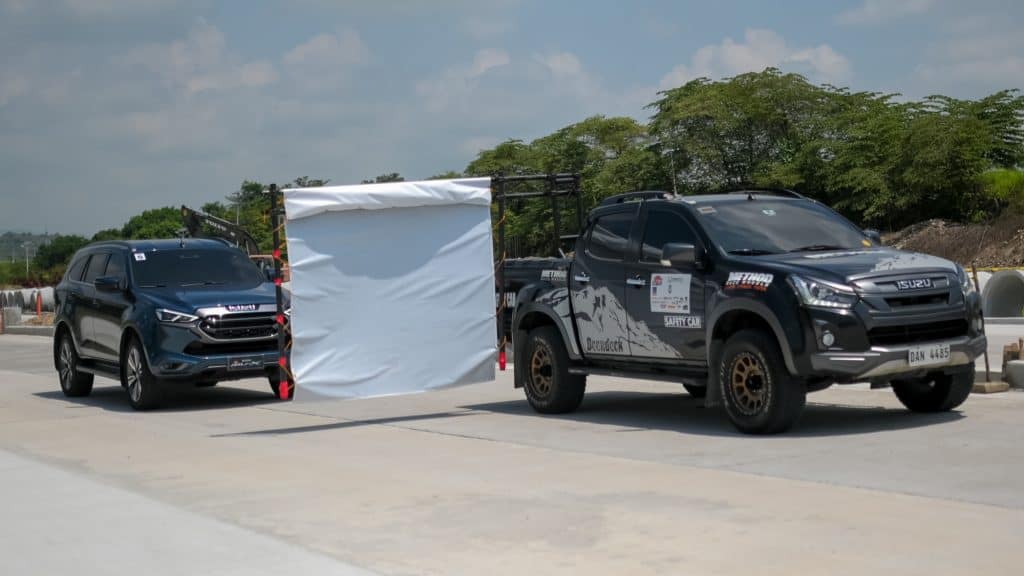
After that was another feature that cannot be tested on public roads – the Autonomous Emergency Braking. It uses the Smart Duo cameras hidden on the console at the windshield to see the obstructions ahead. We were instructed to be steady at more than 30kph, and drive straight towards a tarp that has a printed image of a car’s rear. Since the car was slow, it had two stages of braking in my run. The initial one was to slow down the vehicle and because it still didn’t feel any action from me, it entered stage 2 which is to apply full brakes on the car. However in the real world, it really just applies the brakes full on since most instances happen at higher speed and closer gaps. And yes, it did trigger multiple times during this drive because you know how public rural roads can be.
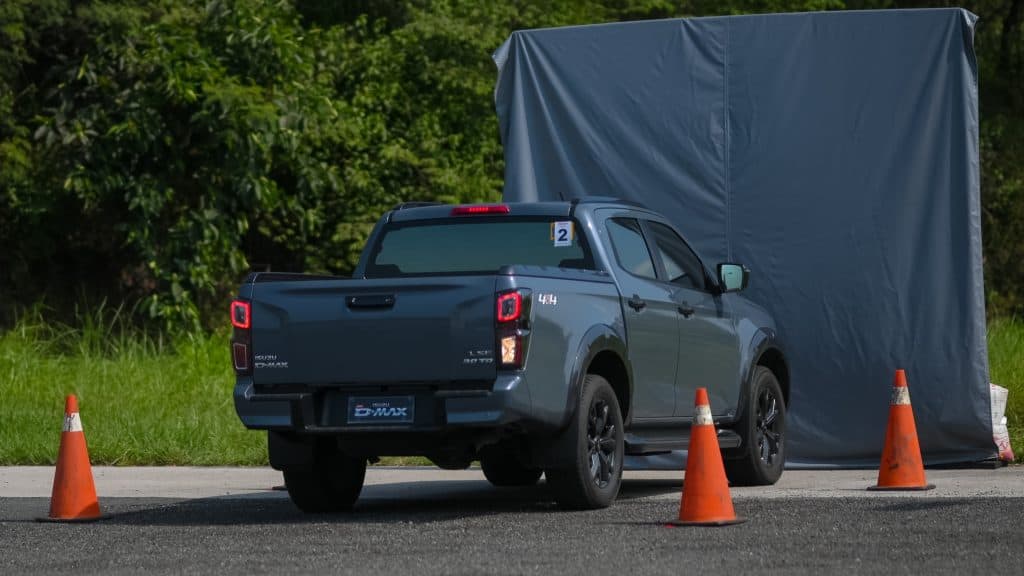
More than their effectiveness, what really surprised me was the human-like feel of the driver assist features. The Adaptive Cruise Control was very smooth in its deceleration and once it catches up to the set speed. Unlike others that try to achieve that speed as fast as possible, the Isuzu mu-X and D-Max would rather cruise to that number. The same can be said for their Forward Collision Warning since it does not apply the brakes 100% every time. There are times where it will only apply a quarter of its capacity if the cameras see that the car infront is moving again and you’re still within its margin of safety. If not, and the car doesn’t feel like you’re putting enough brakes, it will override and apply the brakes full on.
Off-road is still home
I was a bit worried when I found out that we’re about to go through lahar beds for the second half of our activities. The D-Max and mu-X are both more mild in terms of power delivery from the pedal that I thought would hinder their agility on the unpaved terrain. It’s a great thing to have in the city and highway since that means the car isn’t jerky but on the lahar bed, you’d want every bit of power to make sure you don’t sink.
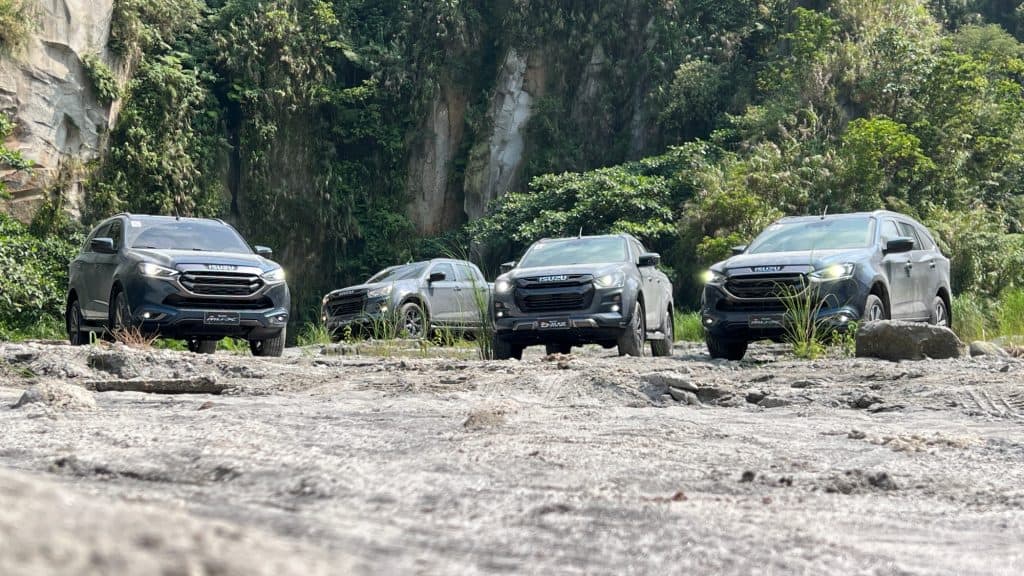
The D-Max quickly put that thought to rest once we’re on the location. Despite running on the 4×2 setting, it didn’t struggle racing on the lahar beds. We even encountered steep obstacles without proper momentum and was surprised that the D-Max’s traction control could surpass that just on the 4×2 mode. There were also other D-Max and mu-X units with us that only have a 4×2 drivetrain and it’s amazing how they survived that slippery mess.
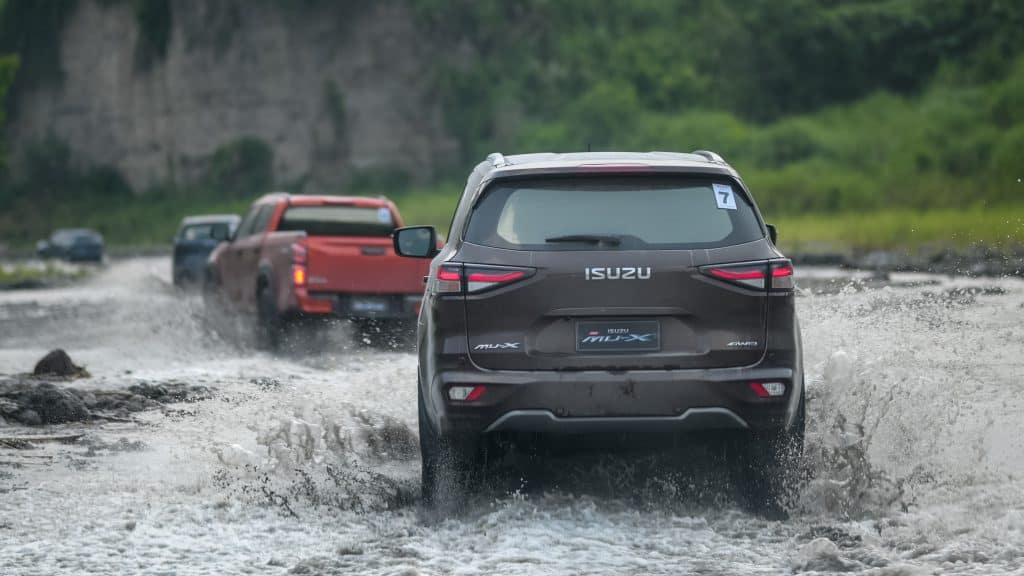
It’s also notable how the D-Max is stable on the uneven terrain. Its suspension acts like it’s still on paved roads, while the steering is just firm enough to give me a more precise steering on the lahar bed. This was very useful for minute changes when we encounter tall rocks after having the windshield wiped or dubious puddles of water that my instinct says we should avoid. I never once felt I was out of control despite the lack of guide on the route.
My takeaway from this is we should never be afraid of changes. Isuzu might’ve realized the direction the industry is going and didn’t think twice about fitting these driver assist features in the D-Max and mu-X. They also came just at the right time as the twin’s rivals in the pickup and SUV segments started their own advanced safety technology. Now the question is, when will we see a hybrid from the diesel expert?

